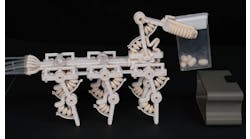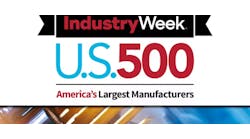The European Union unveiled a blueprint for a free-trade deal with the U.S. that would cut tariffs on a wide range of industrial goods including cars in a bid to heal commercial ties.
European Trade Commissioner Cecilia Malmstrom asked EU governments on Friday in Brussels for the go-ahead to start negotiations on lowering trans-Atlantic commercial barriers, prodding U.S. President Donald Trump to reverse his protectionist stance.
Her draft mandate includes the politically sensitive -- and economically important -- question of autos even though the U.S. has signaled resistance to having them covered by market-opening talks. Washington is investigating whether foreign vehicles pose a national-security threat and should face higher American duties.
“We believe that a balanced and mutually beneficial agreement with the U.S. can be reached,” Malmstrom said in the Belgian capital. “We are prepared to put our vehicle tariffs on the negotiating tables as part of a broader agreement if the U.S. agrees to work together toward zero tariffs for all industrial goods.”
Europe is determined to show progress in enacting a political accord reached at the White House six months ago to “work together toward zero tariffs, zero non-tariff barriers, and zero subsidies on non-auto industrial goods.”
The July 25 pact between Trump and European Commission President Jean-Claude Juncker put on hold the threat of U.S. tariffs on EU cars and auto parts that would be based on the same national-security grounds invoked for controversial American levies on foreign steel and aluminum.
The metal duties as high as 25% prompted tit-for-tat retaliation by the EU, which has vowed a similar reaction to any U.S. automotive duties. A 25% U.S. tariff on foreign cars would add 10,000 euros (US$11,394) to the sticker price of European vehicles imported into the country, according to the commission, the EU’s executive arm.
The current trans-Atlantic trade truce has held as U.S. commercial tensions with China have grown. Nonetheless, the cease-fire has appeared fragile because the Trump-Juncker accord includes ambiguities that have led to contradictory statements by officials on each side and signaled the underlying risk of a sudden escalation.
Agricultural Tariffs
Trump administration representatives have pushed to include agriculture in the scope of any agreement -- a stance rejected by the EU. Meanwhile, the European side has made the case for an accord that would cover cars.
“When Juncker and Trump met, they said there is no scope to discuss agricultural goods and even at the time the talk was regarding industrial products,” commission Vice President Jyrki Katainen told reporters on Friday in Helsinki. “We’re also OK with negotiating over auto tariffs.”
Back in Brussels, Malmstrom sought to bolster the EU case by saying the Trump administration’s own published objectives for talks with the bloc keeps the door open to the inclusion of cars.
The EU’s argument on autos is propelled by political and legal considerations.
A deal that included the sector would give Trump a chance to claim victory in leveling the playing field by ending higher EU import protection (the bloc imposes a 10% duty on American cars, while the U.S. applies a 2.5% levy on European autos).
Such an agreement would also help meet the World Trade Organization’s rule that bilateral agreements among members cover “substantially all” two-way commerce.
Pick-Up Trucks
Some EU officials have speculated that the July accord’s wording on “non-auto industrial goods” reflected a desire by the Trump administration to maintain a prohibitive American tariff of 25% on foreign pick-up trucks. One in six passenger cars sold in the U.S. is a pick-up, with no imports into the country, according to the commission.
Malmstrom signaled on Friday the EU would be prepared to let this U.S. import levy stay, saying “if there are sensitive individual products here like pick-ups, I’m sure that negotiators can find a solution.”
The removal of trans-Atlantic tariffs on industrial goods would expand U.S. exports to the EU by 13% and the bloc’s shipments to the American market by 10%, according to the commission. The average tariff on non-farm products is 4.2% in the EU and 3.1% in the U.S., the commission said.
Malmstrom on Friday also sought permission from EU governments to reach an agreement with the U.S. on “conformity assessment,” part of a parallel push for deeper regulatory cooperation.
By Jonathan Stearns



